Gardening enthusiasts who wish to maximize vegetable growth face the problem of providing enough plant nutrients. Traditional ways of fertilizing that are effective sometimes lead to uneven distribution of nutrients and slow uptake by plant roots. This is where liquid fertilizers come handy; they deliver essential nutrients directly into root zone of the plant in a form easily absorbed. This piece looks into the transformational effect liquid fertilizers have on vegetable gardens, discussing their benefits, application methods and factors necessary to achieve optimal plant health. Gardeners can enhance yields, nutritional quality as well as sustainable gardening practices if they know how liquid fertilizers work and key things to do when using them.
What is Liquid Fertilizer for Vegetables?
Vegetable liquid fertilizer is a highly concentrated solution that contains all the necessary nutrients required for plant growth, including nitrogen, phosphorus, potassium, and trace elements. These fertilizers are formulated so that they can be diluted in water and used for both watering crops or spraying them with leaves; this is to enable quick absorption of nutrients by roots and leaves. This method ensures there is more even distribution of nutrients than granular fertilizers, thus promoting healthier vegetable growth. Liquid fertilizers can also be tailored to meet specific nutrient requirements, which makes them an efficient way for farmers to maximize their vegetables’ productivity efficiently.
How Does Liquid Fertilizer Work?
The process by which liquid fertilizer works is dilution and absorption. Once mixed with water, the concentrated solution creates a fluid rich in nutritional elements that plants can absorb quickly. The crucial technical parameter here is the nutrient concentration often measured by N-P-K ratio (Nitrogen, Phosphorous and Potassium). For instance, a common liquid fertilizer might have an N-P-K ratio of 10-10-10 indicating equal amounts of these essential nutrients.
When applied either directly to soil or as foliage spray, the nutrients find their way into the root zone or leaf tissues very fast. This has been facilitated through this watery medium, which increases the availability of bio-nutrients. The major determinants are soil pH (optimum being about 6.0-6.5 for most vegetables), ambient temperature (best between 60-75°F), and solution concentration since poor control may cause a nutrient burn. Therefore, when used properly, they will greatly enhance nutrient use efficiency leading to improved crop growth rates.
Benefits of Using Liquid Fertilizer for Vegetables
One key advantage of using liquid fertilizer on vegetables is targeted nutrient release at precise levels needed per plant species and stage, thereby guaranteeing better plant health and yield optimization. This parameter is defined by an adjustable N-P-K ratio.
Further, liquid fertilizers increase nutrient uptake efficiency through foliar application or direct soil drenching. Once dissolved in water, the nutrients become highly bio-available thereby allowing for quick absorption by roots or leaves. Key indicators are as follows: N-P-K ratio of the solution; soil pH favoring most vegetables is approximately 6.0-6.5 and finally proper concentration of the solution so as to prevent any nutrient burn.
Liquid fertilizers also provide more even distribution of nutrients eliminating the risk of developing nutrient deficiencies that could happen with granulated fertilizers. Their application can be better managed thus reducing environmental footprint since it minimizes leaching into water bodies. This is due to various technical factors such as method of application (e.g., drip irrigation, foliar spraying) and ambient conditions including temperature (60-75°F being considered optimal).
Basically, using liquid fertilizers gives an efficient means for optimizing vegetable garden productivity and it depends on certain technical parameters indicating ideal growth and health of plants.
Comparison of Liquid and Granular Fertilizers
The advantage of liquid fertilizers is that their N-P-K ratio can be adjusted to suit specific crops. For instance, it might be necessary to increase nitrogen concentration in a crop if it is deficient, or reduce its levels because the soil has too much. In contrast, fixed nutrient formulations make it difficult to determine how much more nitrogen should be added when it is needed for “different vegetables and growth stages.” The N-P-K ratio is one of the most important technical parameters in this comparison; while liquid formulations can be modified based on soil tests and plant nutritional requirements, granular fertilizers give a fixed N-P-K content.
Liquid fertilizers have high solubility and are readily available for absorption by plant roots and leaves hence facilitating fast nutrient uptake. Granular forms dissolve over time leading to delayed nutrient availability thus reducing efficiency. It is necessary to know how easily granules break up into soluble nutrients when they get wet as well as being able to measure the amount of nutrients absorbed by plants from liquids.
Uniform distribution of liquid fertilizers using drip irrigation systems or foliar sprays ensures even coverage over all parts of plants. Granules are unevenly distributed with higher concentrations in some spots where there might not be enough soil moisture for plants’ uptake. Some technical parameters that need consideration are mode of application (e.g., drip irrigation, foliar spraying) for liquid fertilizers versus broadcasting them through banding or spreaders for pellets as well as effects such as temperature and humidity on release rates among others.
Granular fertilizers may lead to uneven distribution and potential nutrient hotspots unless carefully incorporated into the soil while liquid ones can be evenly applied throughout fields by sprinklers or sprayed on foliage. They can also run off from fields if poorly used or excessive amounts are applied at once, which may result in water pollution thereby causing environmental degradation in various ways like killing aquatic organisms due to eutrophication. For instance, the solution concentration in liquid fertilizers mustn’t cause nutrient burn while using granular ones would require knowing the soil’s cation exchange capacity (CEC) which influences nutrient retention and release.
Thus, when comparing liquid and granular fertilizers, key technical parameters include:
- N-P-K Ratio Adjustability
- Nutrient Uptake Efficiency (Dissolution Rate for Granular, Bioavailability for Liquid)
- Application Methods and Distribution Uniformity
- Environmental Impact (Runoff Potential and Solution Concentration for Liquid Fertilizers, CEC for Granular Fertilizers)
How to Apply Liquid Fertilizer to Your Vegetable Garden?
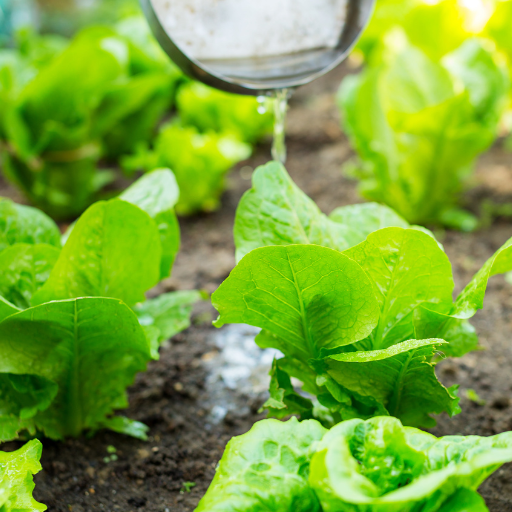
To effectively apply liquid fertilizer to your garden of vegetables, follow these guidelines. Mix concentrated liquid fertilizer with water as per the guidelines given by the manufacturer, usually at a ratio such as one ounce of fertilizer for each gallon of water. In order to ensure uniform distribution, you may use a watering can or hose-end applicator. When employing a watering can, saturate the soil around the base of each plant with a solution ensuring thorough wetting but without causing flooding. For foliar feeding purposes, a spray bottle or hose-end sprayer should be utilized, targeting their undersides, which are the most absorbent areas on leaves. Carry out such activities either very early in the morning or late in the evening when there is little evaporation and lower risk of scalding due to high temperatures. If an individual applies them every 2-4 weeks consistently during growing season he will be able to maintain recommended nutrient levels. Always follow instructions in order not to over-fertilize which can damage plants and harm environment also.
Steps to Properly Apply Liquid Fertilizer
- Dilution: Begin by thoroughly mixing the liquid fertilizer with water according to the manufacturer’s recommendations. This typically involves combining one ounce of fertilizer per gallon of water.
- Selection of Equipment: Choose appropriate equipment for application—either a watering can or a hose-end sprayer. Using the right tool will ensure uniform distribution and ease of application.
- Soil Application: Apply the diluted fertilizer directly to the soil at the base of the plants. This method ensures that the nutrients reach the root zone effectively without causing runoff.
- Foliar Feeding: For an alternative method, particularly beneficial for quick nutrient uptake, use a spray bottle or hose-end sprayer to mist the solution on the leaves. Target the undersides of the leaves, where nutrient absorption is more efficient.
- Timing: Conduct the application either in the early morning or late evening. This timing minimizes evaporation and reduces the risk of leaf burn due to direct sunlight.
- Frequency: Repeat applications every 2-4 weeks during the growing season. This regularity helps maintain consistent nutrient levels for optimal plant growth.
- Adherence to Guidelines: Always follow the recommended dosage and application frequency to avoid over-fertilization risks. Over-fertilizing can lead to nutrient runoff, environmental damage, and plant health issues.
When is the Best Time to Apply Liquid Fertilizer for Vegetables?
For best results, apply liquid fertilizer to vegetables early in the morning, sometime between 6:00 AM and 10:00 AM, or in the late evening, from 4:00 PM to 6:00 PM. This time is very important because it reduces evaporation and prevents leaves from burning due to the intensity of midday sun.
In essence, these timings have cooler temperatures and higher humidity levels which improve both soil and foliage absorption efficiencies as well. Besides, morning hours or evening applications allow plants to recover better during the night, hence increasing nutrient uptake.
It is necessary to tailor your practices based on individual plant requirements and respective fertilizer type. For instance, when dealing with a solution containing a high nitrogen content (20-10-10 N-P-K ratio), avoid application rates that are beyond those specified by manufacturers so as not to cause nitrogen burn or environmental run-offs which may result from this phenomenon.
Think about how cool ambient temperatures during these times of the day mean that there will be reduced rates of evaporation which is why the above recommendations are given. Such conditions create a conducive environment for efficient uptake of nutrient solution into root zone thus promoting healthy growth of strong vegetables.
Common Mistakes to Avoid When Applying Liquid Fertilizer
- Over-Application: One of the most prevalent mistakes is using too much liquid fertilizer. Over-application can lead to nutrient imbalances, causing plant toxicity and potentially harming beneficial soil microorganisms. To avoid this, always adhere strictly to the recommended dosage specified by the fertilizer manufacturer.
- Inaccurate Dilution: Another frequent error is improper dilution of the fertilizer concentrate. Using an undiluted or incorrectly diluted solution can result in root burn and stunted growth. Ensure you follow the exact mixing instructions provided on the product label to achieve the correct nutrient concentration.
- Inconsistent Application: Irregular fertilization schedules can lead to inconsistent plant growth. It’s essential to establish a regular fertilization routine based on the specific nutrient requirements of your crops and follow it diligently. This consistency helps maintain a steady supply of essential nutrients, fostering healthy development.
What Are the Key Nutrients in Liquid Fertilizers?
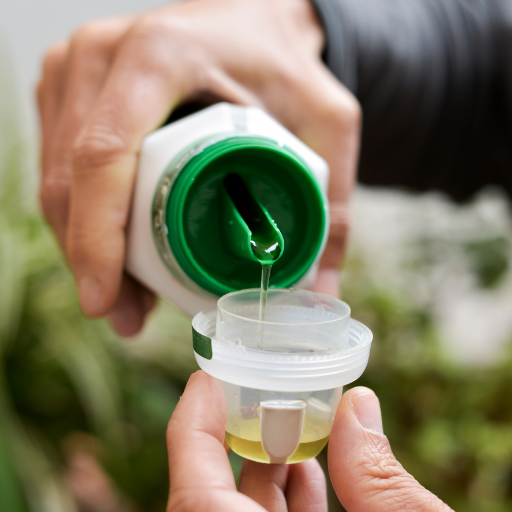
There is a number of nutrients in liquid fertilizers that are essential for the growth of plants. These fertilizers contain macronutrients and micronutrients that are important for plant growth, including nitrogen (N), phosphorus (P) and potassium (K), which are the primary macronutrients. Nitrogen supports vegetative growth, phosphorus helps to form roots and flowers while potassium promotes general health of the plant as well as disease resistance. Furthermore, liquid fertilizers have other secondary macro-nutrients such as: calcium (Ca), magnesium (Mg) and sulfur (S); all these play various physiological roles within the plant. However, it is important to note that these micro-nutrients, although required in small quantities, have an equally significant role to play in maintaining healthy plants; these include iron (Fe), manganese(Mn), zinc(Zn), copper(Cu), molybdenum(Mo) boron(B) and chlorine(Cl). Each nutrient listed has its own specific function towards ensuring robust and healthy growth of plants. Properly balanced liquid fertilizers ensure that plants receive all essential nutrients in a readily available form thereby promoting optimal growth and productivity.
Role of Nitrogen in Vegetable Growth
Other than chlorophyll being made up of nitrogen among other substances, this element also forms part of amino acids present in proteins hence making it necessary for cell division. Adequate nitrogen supply ensures vigorous vegetative growth, lush foliage and dark green colors in vegetables.Nilogenesis is another process where light energy is converted into chemical energy during photosynthesis.It’s crucial because it provides raw materials used during synthesis.The main reasons why there must be enough nitrogen supplied to vegetable crops throughout their life cycle include stunted grow- yellowing leaves or chlorosis which results from low levels of nitrogen synthetically active nitrate reductase enzyme activity within cells when protein levels start falling due to inadequate nitrogen amountsthis is also a very crucial compound in the plant cell cycle. In this regard, nitrogen significantly impacts the growth and development of vegetable crops.
Importance of Phosphorus and Potassium in Liquid Fertilizers
Phosphorous ensures that energy is transferred as well as stored within plants through the formation of ATP, thus driving various biochemical reactions necessary for growth.Potassium is used in some physiological processes such as enzyme activation, photosynthesis and water absorption. When cell walls are fortified, they become more resistant to infections and adaptive to environmental changes.Many liquid fertilizers have good levels of potassium that increases their quality and prolongs shelf life so as to reduce post-harvest losses.In vegetable plants, potassium regulates physiological process like enzyme activity, photosynthesis and water uptake.Adequate potassium levels in liquid fertilizers contribute towards improved quality and longevity of harvested crops thus ensuring their marketability.
Are Organic Liquid Fertilizers Better for Your Garden?
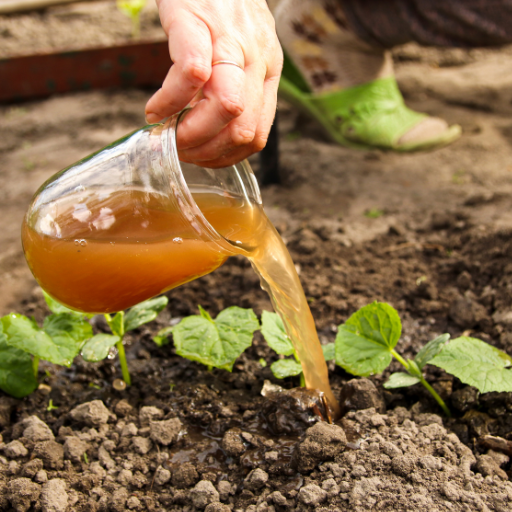
Organic liquid fertilizers have several key merits in relation to maintaining a healthy garden ecosystem. For instance, they improve soil structure by increasing microbial activity and organic matter content which helps in enhancing soil fertility overtime. This is unlike chemical-based fertilizers that release nutrients quickly. Instead, organic liquid fertilizers slowly release nutrients making it impossible for plants to lack nutrients or experience leaching.
Likewise, organic liquid fertilizers are environment-friendly as they do not harm the soil and water systems. Moreover, they can enhance plant health and hardiness by promoting strong root growth and resistance to pests and diseases. However, the suitability of these types of fertilizers differs according to specific garden conditions, requiring more frequent application than synthetic alternatives.
Therefore, while organic liquid fertilizers are generally used for sustainable gardening practices, individual needs should dictate their use.
Merits of Organic Liquid Fertilizers
Organic liquid fertilizers provide numerous benefits in support of sustainable gardening practices. First among them is the improvement of soil health through increased microbial activity as well as organic matter content, thereby improving the structure and fertility status of soils. This leads to better water-retention capacity and aeration; thus creating an optimal growing environment for roots.
Secondly, unlike synthetic ones, organic liquid fertilizers release nutrients slowly, minimizing nutrient leaching risk while providing a constant food supply to plants over a long period. This ensures that plants don’t become deficient in any essential nutrient over an extended period.
In terms of technical parameters, such products typically contain balanced percentages of macro-nutrients like nitrogen (N), phosphorous (P) and potassium (K), together with minor elements such as calcium (Ca), magnesium (Mg) and sulfur(S). These elements are important for various physiological processes including photosynthesis, enzyme activation, and protein synthesis. For example, an average type would have an NPK ratio of 2-1-3 just to ensure that macronutrients are available in a balanced form. In addition, many organic formulas have humic acids and beneficial microorganisms that enhance nutrient absorption and soil viability.
Moreover, unlike chemical-based ones, they are biodegradable and often derived from renewable sources, making them safer for the garden and its environs. Their use creates more favorable conditions for beneficial insects and soil organisms, thus promoting biodiversity and resilience within garden ecosystems.
How to Choose the Best Liquid Fertilizer for Vegetables?
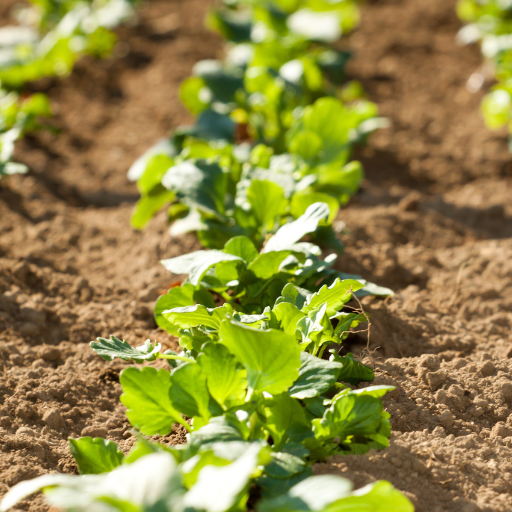
To select the right liquid fertilizer for vegetables, consider its nutrient content, which should include a balanced ratio of Nitrogen (N), Phosphorus (P), and Potassium (K) needed for healthy plant growth as well. Also examine the suitability of the fertilizer in relation to your soil type and the specific needs of vegetable species cultivated. Go for organic options that have fewer synthetic additives to boost sustainability and reduce environmental impacts. Additionally, choose products with helpful microorganisms such as mycorrhizae or beneficial bacteria which help improve nutrient uptake and soil health. Lastly, does it fit into your gardening routine? Verify whether you can dilute it or if it’s ready-to-use.
Factors you need to look at in selecting Liquid Fertilizer
The best decisions on liquid fertilizers are made by considering some important aspects that guarantee their great functioning and appropriateness to your garden. Firstly, scrutinize the nutrient composition, focusing on the N-P-K ratio, which is expressed percentage-wise, indicating how much nitrogen, phosphorous, and potassium are contained in it. For instance, a balanced ratio like 4-4-4 or a more specific one depending on the needs of a given plant, such as 10-5-5 for leafy greens, would be appropriate.
Secondly, ensure that the product has been certified organic. Organic fertilizers certified by OMRI (Organic Materials Review Institute) do not contain synthetic chemicals, so they support sustainable gardening practices. In addition, check for other added ingredients that may benefit plants’ health, such as humic acids, which enhance nutrient uptake, or seaweed extracts, which provide micro elements and growth hormones.
The presence of helpful bacteria plays a significant role; similarly, concerning useful fungi is crucial here. Mycorrhizal-containing products certainly affect root formation better, bringing about enhanced food absorption capacity and thereby improving plant resistance, while some sorts of friendly bacteria may act upon decaying organic matter, leading to soil enrichment.
These criteria, founded on solid scientific principles, ensure that you choose a liquid fertilizer which will not only feed your vegetables properly but also maintain the health of your garden over a long period of time.
Reading and Understanding Fertilizer Labels
To effectively read and understand fertilizer labels, it is important to familiarize oneself with specific technical parameters and key terminologies. Some of these are:
- N-P-K Ratio: This indicates the percentages of nitrogen (N), phosphorus (P), and potassium (K) contained in the product. Higher first number implies more nitrogen hence useful for growth of leaves while higher middle or last numbers suggest a preference for developing roots or flowers.
- Guaranteed Analysis: This part provides information about the minimum nutrients present in the fertilizer, including secondary plant nutrients and micronutrients such as calcium (Ca), magnesium (Mg), sulfur (S), to meet specific plant nutrition requirements.
- Directions for Use: This may include how often to apply, at what rates to apply, and how to use it so as not to burn plants with too much fertilizer. The guidelines consider different types of plants at various stages of growth for this particular product’s usage.
- Ingredients: The insights on nutrient origin whether from organic materials or synthetic compounds guide decisions on application methods and environmental impacts. Organic sources are often slow-releasing providing extended nutrient availability.
- Potential Acidity or Basicity: Depending on this parameter gardeners can choose a fertilizer that helps them maintain soil pH within an optimal range for given plants. Neutral fertilizers could be better choice if you already have soils in their desired pH range.
- Soluble and Rate of Release: In plants, how fast the nutrients are ready for use solely depends on their solubility. Slow-release formulations provide a continuous supply of nutrients over time, reducing the regularity of applications.
Accurate and thorough interpretation of these technical parameters based on informed label reading facilitates specific nutrient management thereby enhancing healthy plant growth.
How Often Should You Fertilize Your Vegetable Garden with Liquid Fertilizer?
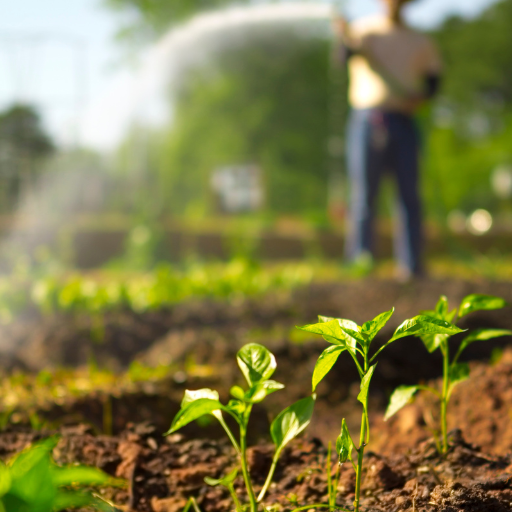
This frequency of feeding your vegetable garden with liquid manure depends largely on needs of the plants and the stage they are in. In general, liquid fertilizer is recommended to be applied every 2-4 weeks during the growing season. A diluted liquid fertilizer can be used weekly for seedlings and young plants to support early growth. On the other hand, mature plants especially those that are considered as heavy feeders like tomatoes and peppers may need more frequent ones; after all each two weeks will do for them. However, plants with lower nutrient needs may only require this once a month on their leaves. Moreover, you should adjust how often you do it according to what you observe about their health and speed of growth while following instructions given by producers or else there may be over-fertilization which can lead to burning nutrients.
Best Time to Fertilize Different Vegetables
The best time to fertilize different vegetables is determined by considering each plant’s specific nutrient requirements and growth stages.
Tomatoes: Heavy feeders such as tomatoes do well with balanced fertilizers that replenish essential nutrients required by crops at planting stage. Applying a phosphorus-based liquid fertilizer to encourage root growth when transplanting your tomato crop. Once flowering begins, use potassium rich varieties in order for high fruit set. It is commonly advised to fertilize tomatoes every 14 days throughout the season then adjust according to leaf response or soil test results.
Lettuce: Leafy greens, including lettuce, have average nutrient requirements. For continuous absorption of soil nutrients in large quantities, leading to fast expansion above ground and consequently high leaf production, foliar application of a water-soluble mixed ratio diet should be done after 10-14 days, depending on how much food has already been taken up from below ground using roots. Balanced nutrition can be achieved when one uses an N-P-K formulation with equal N-P-K ratios (e.g., 10-10-10) for the whole season.
Cucumbers: Nitrogen is required in cucumber vine and leaf development, and then potassium during flowering and fruiting. Thus, a mix rich in nitrogen is applied at planting, followed by using balanced or potassium-oriented fertilizers every 3-4 weeks to maximize yields and improve fruit quality.
The most important of these considerations are nutrient concentration (N-P-K values), rate of application, and soil pH compatibility. Monitoring these parameters ensures accurate nutrient management for healthy vegetable growth in a strong way.
Signs Your Vegetables Need More (or Less) Plant Food
Nutrient deficiencies or excesses can manifest through various symptoms, impacting plant health and yield. Identifying these signs early allows for timely nutrient adjustments, promoting optimal growth:
Nitrogen Deficiency/Excess:
- Deficiency: Pale yellowing of older leaves, stunted growth, and poor fruit development indicate nitrogen deficiency. Correct by applying a nitrogen-rich fertilizer (e.g., 20-10-10).
- Excess: Dark green foliage with excessive vegetative growth but poor flowering and fruiting. Mitigate by reducing nitrogen fertilizer application and increasing potassium levels.
Phosphorus Deficiency/Excess:
- Deficiency: Purple or reddish discoloration of leaves, particularly on the undersides, along with weak root systems and delayed maturity. Address by using a high-phosphorus fertilizer (e.g., 10-30-10).
- Excess: Can inhibit zinc and iron uptake, leading to yellowing between leaf veins. Alleviate by balancing soil nutrients and possibly applying micronutrient supplements.
Potassium Deficiency/Excess:
- Deficiency: Browning or yellowing edges of leaves, weak stems, and reduced fruit quality. Remedy through potassium-rich fertilizers (e.g., 0-0-60).
- Excess: May cause calcium and magnesium deficiencies, indicated by leaf scorch or interveinal chlorosis—balance by adjusting potassium input and supplementing with calcium and magnesium if needed.
Calcium Deficiency:
- Symptoms include blossom end rot in tomatoes, cucumbers, and peppers, manifested by dark, sunken spots on fruit bottoms. Correct by applying calcium chloride or dolomitic lime. Ensure soil pH ranges from 6.0 to 6.5 for optimal uptake.
Magnesium Deficiency:
- Magnesium deficiency presents as yellowing between leaf veins, starting with older leaves. Address with magnesium sulfate (Epsom salts) or a balanced fertilizer containing magnesium (e.g., 5-5-5).
By monitoring these indicators and adjusting the specific nutrient concentrations, application rates, and ensuring soil pH compatibility, precise nutrient management can be achieved, fostering robust and healthy vegetable growth.
Liquid Fertilizer Application Seasonal Considerations
To optimize nutrient uptake and plant health, it is necessary to consider seasonal changes when applying liquid fertilizers. In the spring, frequent applications of a balanced fertilizer (e.g., 10-10-10) are recommended to support both foliage development and root establishment in plants that exhibit vigorous growth. Soil test results and specific crop needs should guide application rates, usually around 1 to 2 pounds per 1000 square feet.
During summer, temperatures rise, causing plants to suffer from heat stress and drought; hence, steady nutrient availability without over-fertilization is needed. Nonetheless, it is possible to apply a more diluted solution at a rate of 1 pound per every two or three weeks to every 1000 square feet to ensure that growth is maintained while avoiding nutrient burn.
Many plants go dormant during the fall season. During this period less frequent application with low concentration of fertilizer should be done because of this. Lower nitrogen feed such as a formulation having 5-10-10 may prove important when applied at approximately between 0.5-1pound per 1000 square feet so as to support root development and prepare for winter.
In winter, minimal liquid fertilizers should be used due to reduced growth processes, but evergreens can continue growing. Therefore, a very dilute fertilizer solution of about 0.2 pounds monthly per every thousand square feet will suffice without overstressing them.
These types of seasonal adjustments combined with ongoing soil testing and monitoring will help maintain optimum plant health throughout the year resulting in increased farming efficiency.
Frequently Asked Questions (FAQs)
Q: What is liquid vegetable fertilizer, and why should I use it?
A: Liquid vegetable fertilizer is a type of plant fertilizer that is mixed with water and applied to the soil or foliage. It’s particularly effective for quick nutrient absorption, promoting healthier and faster plant growth. Using liquid vegetable fertilizer is beneficial for providing immediate nutrients to your garden.
Q: Is liquid fish fertilizer suitable for all types of plants?
A: Liquid fish fertilizer is a versatile and organic plant food that can be used on a variety of plants including vegetables, herbs, and flowers. Its high nutrient content supports plant growth and improves soil health.
Q: What are the benefits of using organic fertilizer for my vegetable garden?
A: Organic fertilizers provide essential nutrients to plants in a natural way, improve soil structure, and enhance its ability to retain water and nutrients. This leads to healthier plants and improved yields. Organic fertilizer also supports overall soil health by encouraging the presence of beneficial microorganisms.
Q: How often should I apply herb liquid fertilizer 3-2-2 to my plants?
A: Herb liquid fertilizer 3-2-2 can be applied every 1-2 weeks during the growing season. However, frequency may vary based on plant type and specific needs. Always follow the instructions on the product label for best results.
Q: What does OMRI listed mean, and why is it important for liquid plant fertilizers?
A: OMRI listed indicates that a product has been reviewed and approved by the Organic Materials Review Institute for use in certified organic production. This is important as it ensures the product meets strict standards required for organic gardening, ensuring it is free from harmful synthetic additives.
Q: Can I use liquid concentrate fertilizers on indoor plants?
A: Yes, liquid concentrate fertilizers are suitable for indoor plants. These concentrates provide a balanced nutrient supply, promoting healthy plant growth indoors. Just be sure to dilute the concentrate according to the instructions to avoid over-fertilization.
Q: What is the difference between foliar feeding and soil application of liquid fertilizers?
A: Foliar feeding involves spraying liquid fertilizer directly onto the leaves, allowing plants to absorb nutrients through their foliage. Soil application involves watering the liquid fertilizer into the soil where plant roots absorb the nutrients. Foliar feeding can provide quicker nutrient uptake, while soil application provides a more sustained nutrient supply.
Q: Are liquid fish fertilizers safe for home grown vegetables?
A: Yes, liquid fish fertilizers are safe for home grown vegetables and contribute to healthy, robust plant growth. They are made from organic material and provide a strong nutrient boost without harmful chemicals, making them ideal for home gardeners practicing organic gardening.
Q: How do I properly use a liquid nutrient quart for my lawn?
A: To use a liquid nutrient quart for your lawn, dilute the product according to the label instructions and apply evenly across your lawn using a hose-end sprayer or watering can. Regular applications will help maintain lush, green grass by providing essential nutrients to the soil and grass roots.
Q: Can fish fertilizer contribute to better yields in organic tomato gardening?
A: Absolutely. Fish fertilizer is rich in essential nutrients like nitrogen, phosphorus, and potassium, which are vital for tomato growth. It enhances soil health, improves plant vigor, and ultimately leads to better yields in organic tomato gardening.






